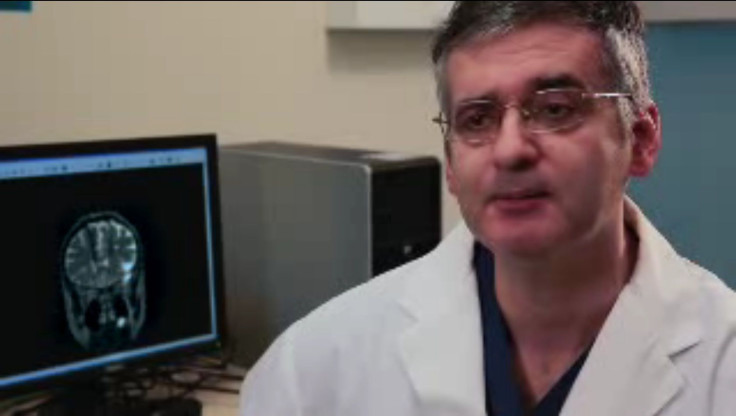Anorexia Nervosa Brain Implant Can Treat Severe Eating Disorder Symptoms

Eating disorder treatment can be extremely difficult, but a team of scientists has developed a breakthrough technique for healing patients with severe anorexia nervosa - a brain implant that gradually stimulates normal appetite and lifts mood.
This is the first time the brain implant treatment has been tried on severely anorexic patients, and suggests that other mental illnesses like eating disorders might be treated similarly.
Six patients, all women with severe anorexia nervosa aged 24 to 57, were in such poor health that they agreed to enroll in the risky treatment pilot study at the Krembil Neuroscience Centre in Toronto, Canada.
None of them had responded to previous eating disorder treatments, and all were at a high risk of dying of the illness. One of the patients suffered from anorexia symptoms for 37 years, and four of them had been admitted to the hospital more than 10 times. All of them except one also suffered from psychiatric conditions like major depression and obsessive-compulsive disorder.
Researchers say that the study results, published in the medical journal The Lancet on March 6, "give hope to patients with especially pernicious forms of the disorder and their families."
The study, entitled "Deep Brain Stimulation of the Subcallosal Cingulate Area for Treatment-Refractory Anorexia Nervosa: A Phase I Pilot Trial," is a collaboration among University of Toronto researchers including neurosurgery resident Dr. Nir Lipsman; neurosurgeon Dr. Andres Lozano, whose lab pioneered early deep brain stimulation (DBS) research; and Dr. Blake Woodside, medical director of Canada's largest eating disorders program at the Toronto General Hospital.
Anorexia nervosa is a mental illness that affects 1 to 2 percent of the population, with one out of every 100 American women and one out 400 men suffering from the eating disorder.
It involves an intense fear of weight gain and distorted body image that leads to severe self-restriction of food intake and dramatic loss of body weight. Anorexia symptoms include depression, fatigue, insomnia, thinning hair, the growth of downy hair that covers the body, absence of menstruation in women, and dehydration.
It has the highest mortality rate of any mental illness, with 18 to 20 percent of those who suffer dying of anorexia symptoms within 20 years.
Since anorexia usually begins in adolescence, when the brain is still developing, the effects of chronic starvation cause reinforcing brain damage that makes the condition even more difficult to treat - only 30 to 40 percent of those who suffer ever fully recover.
The goal of eating disorder treatment for anorexia symptoms is not only to promote weight gain, but to lift mood enough that patients will not relapse after reaching a healthy target weight.
"There is an urgent need for additional therapies to help those suffering from severe anorexia," said Dr. Woodside in a statement. "Eating disorders have the highest death rate of any mental illness and more and more women are dying from anorexia. Any treatment that could potentially change the natural course of this illness is not just offering hope but saving the lives for those that suffer from the extreme form of this condition."
The researchers based their brain implant eating disorder treatment on previous uses of deep brain stimulation (DBS), which has been used for decades to treat extreme cases of brain conditions like severe depression, obsessive-compulsive disorder, and Parkinson's disease.
The DBS technique involved drilling holes in the skull while patients were under local anesthetic, then inserting a "brain pacemaker" electrode deep inside brain regions that promote appetite and lift mood. The brain implant was programmed to emit tiny electrical impulses that stimulate surrounding neurons.
The brain implant surgery was conducted while patients were awake, which allowed surgeons to get sensory and emotional feedback from the patients during the process to make sure the electrodes were stimulating the correct brain region.
After placement in the appropriate part of the brain, the electrode brain implant was connected to a "pacemaker" device that was inserted under the skin near the collar bone while patients were under general anesthesia.
Ten days after the surgery, the pacemaker was turned on and began to deliver periodic electric pulses to the brain implant in the subcallosal cingulate cortex, an area implicated as a target for deep brain stimulation in severe depression.
The patients were observed for months after surgery, and after nine months, three of the six patients had experienced their longest period of weight gain since the onset of their anorexia nervosa. None of the six lost any weight, and most reported a significantly better mood and quality of life, with reduced anorexia symptoms like depression, eating disorder rituals, and intense food and weight preoccupations.
Two of them were able to successfully complete an inpatient eating disorder treatment program for the first time after the surgery.
The positive effects of the DBS eating disorder treatment were much more dramatic than expected. Though the brain implant is still an experimental treatment, the researchers believe it can help treat other extreme cases of anorexia nervosa and help researchers better understand the disorder's development.
"We are truly ushering in a new of era of understanding of the brain and the role it can play in certain neurological disorders," said Dr. Lozano. "By pinpointing and correcting the precise circuits in the brain associated with the symptoms of some of these conditions, we are finding additional options to treat these illnesses."
Published by Medicaldaily.com



























